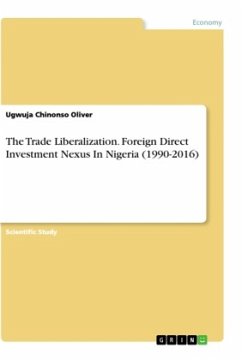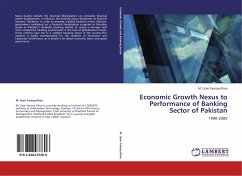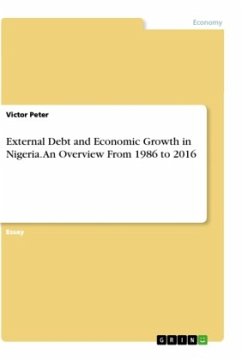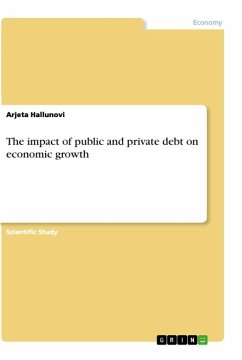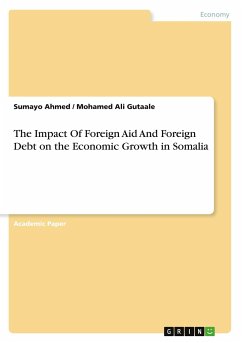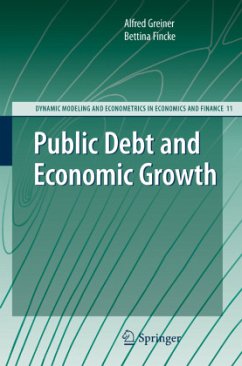
Debt and Growth Nexus for European Economies
Versandkostenfrei!
Versandfertig in 1-2 Wochen
27,95 €
inkl. MwSt.

PAYBACK Punkte
0 °P sammeln!
Master's Thesis from the year 2019 in the subject Economics - Economic Cycle and Growth, The University of York, course: MSc Economics, language: English, abstract: Despite the European sovereign debt crisis, few empirical studies have examined the debt and growth nexus for European economies, particularly on a holistic European level. This study sets out to address this gap by using data for 25 European Union member states to carry out a comprehensive analysis of the impact of debt on economic growth. A panel autoregressive distributed lag model (ARDL) is used to analyse the impact of debt on...
Master's Thesis from the year 2019 in the subject Economics - Economic Cycle and Growth, The University of York, course: MSc Economics, language: English, abstract: Despite the European sovereign debt crisis, few empirical studies have examined the debt and growth nexus for European economies, particularly on a holistic European level. This study sets out to address this gap by using data for 25 European Union member states to carry out a comprehensive analysis of the impact of debt on economic growth. A panel autoregressive distributed lag model (ARDL) is used to analyse the impact of debt on growth. This framework helps in determining both the long and short-run impact of debt on growth. This mitigates some limitations of previous empirical literature that explains either the short- or long-run effect. The full panel ARDL estimation illustrates a negative relationship between debt and growth both over the long and short-term. The debt and growth nexus, although of different magnitudes, is also negative across high and low levels of debt and across different time periods. Finally, a Dumitrescu Hurlin panel causality test is carried out to establish the causal direction between debt and growth. Evidence of bidirectional causality is detected for the full panel of countries. However, the direction of causality varies between countries with high and low average debt-to-GDP ratio. In the aftermath of the 2007 global financial and economic crisis, the level of global public debt has increased significantly. This upsurge in global public debt has led to the revival of the academic debate on public debt and economic growth nexus. With global debt levels well above those registered in 2008, it is vital to analyse the repercussions that government debt has on growth. Empirical research in this area is key to identify the policy recommendations needed to avoid another economic crisis.



